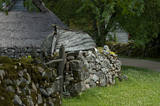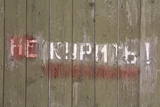| Nr | Nosaukums | Apraksts |
|---|---|---|
|
Puises „centrā” uz vienstāvu koka mājiņas jumta izveidota skatu platforma. No tās paveras laba ainava uz ciemu, ostu un piekrastes kadiķu laukiem. |
||
|
Atpūtas vieta Gaujas upes kreisajā krastā, pusceļā starp Virešiem un Aņņu tiltu (Gaujiena-Valka; P23). Pieejams galds maltītēm, ugunskura vieta, sausa malka, telšu vietas, tualete. |
||
|
„Mieriņi” ir īsta liela lauku saimniecība pļavu meža vidū, kas atrodas pie Latvijas robežas. Tīrajos Latgales laukos tiek audzēti bioloģiski dārzeņi un lopi. Saimnieki dzīvo saskaņā ar dabu un aicina ikvienu savu viesi izjust un izbaudīt apkārtnes skaistumu ar visām maņām: gan garšojot, gan elpojot, gan taustot un klausoties. Visas maņas apvienojot, izdodas dzīvot pa īstam. Miera pilna Latgales ainava ieskauj bioloģisko saimniecību „Mieriņi”. Šī vieta dāvās atpūtu ar jauno lapu žilbinošo zaļumu un skurbinošajām putnu dziesmām pavasarī, ar plašo debess jumu, kas atspoguļojas ūdeņos, un košajām dabas krāsām vasarā, ar dzelteno lapu paklāju rudenī un ziemā – ar silto sniega segu uz karstās pirtiņas jumta. Papildu bioloģiskās gaļas produktiem saimniecība piedāvā arī latviešu gadskārtu svinības, nodarbības dabā, pirts pakalpojumus un telšu vietas. |
||
|
Pret dienvidiem vērsta Abavas senlejas krasta nogāze, kur jau hercoga Jēkaba laikā audzēja vīnogas, no kurām darināja skābenos Kurzemes vīnus. Vīnogu audzēšanas (tālākais ziemeļu punkts Eiropā) tradīcijas šeit turpina arī mūsdienās. |
||
|
Tornis atrodas Niedrāju – Pilkas purvā, līdz kura „sirdij” var nokļūt pa bijušo – 1912. g. celto Ainažu – Valmieras – Smiltenes šaursliežu dzelzceļa līniju un pēcāk pa dabas takas laipām (ap km garas). Pārskatāms augstā tipa purvs ar nelieliem ezeriņiem torņa piekājē. Atrodas Ziemeļvidzemes biosfēras rezervātā. |
||
|
Muižas pils (no sarkaniem ķieģeļiem celta) ir meklējama ceļu krustojumā pie Gaujām – 2 km ziemeļaustrumos no Jaunpiebalgas centra, Gaujas labajā krastā. Līdz 1918. g. muižas īpašnieki bija slaveno grāfu Šeremetjevu dzimta. Muižas pili nodedzināja 1905. g. nemieros, bet vēlāk atjaunoja. Muižas pilī bijušas dažādas iestādes: slimnīca, kolhoza „Piebalga” administrācija, mūsdienās – pašvaldība un dažādu sadzīves pakalpojumu sniedzēji. |
||
|
Zirgu un cilvēku labsajūtas centrs "Dabas zirgi" tepat Pierīgā, vēsturiskajā Mežinieku apkaimē, būs atklājums tiem, kas arvien vēlas sajust piederības sajūtu Latvijai, Latvijas dabai. Pieskarties mežam, ļauties Misas vēsajam ūdenim, satikt Smērdūkli vai saskatīt zirga elpu miglainā rītā? Saimnieki aicina pie sevis pavadīt arī ilgāku laiku, nakšņot jaunizveidotajā glempingā, skaistā vietā meža vidū pie Misas stāvkrasta. Iespēja atpūsties pilnīgā klusumā, kur blakus būs tikai mežs un upe. Un zirgi! "Dabas Zirgos" iespējama pastaiga ar zirgu, ekskursija pie zirgiem ar zirgu barošanu, izjāde ar zirgu. Šeit var arī svinēt savas ģimenes svētkus, jo ir pieejama nojume, grils un ugunskura katls. Iepriekš vienojoties, var pasūtīt arī brokastis, pusdienas un vakariņas. Pieejama pirts un baļļa. |
||
|
Geraņimovas Ilzas ezera krastā atrodas „Zemeņu krastiņi”, kur lielās platībās audzē, pārstrādā (ap 10 šķirnes). Saimniecei ir piedāvājums - sešu dienu ilga zemeņu kūre veselības uzlabošanai. Zemeņu lasīšana, degustācija un iegāde svaigā un apstrādātā veidā, zemeņu maskas, ēdieni no zemenēm, māla maskas un kompreses pret locītavu sāpēm, floristikas iemaņu apguve, brauciens pa ezeru u.c. |
||
|
Atrodas A9 autoceļa malā, 0,5 km no Lestenes pagrieziena Rīgas virzienā. Akmens (autors O. Feldbergs) uzstādīts 1991. gadā (bijušo „Rumbu” māju vietā), pieminot Kurzemes cietokšņa aizstāvjus, kas, izturot desmitkārtīgu padomju armijas pārspēku, ļāva ~ 300 000 latviešu kara bēgļiem emigrēt no sekojošā padomju terora. |
||
|
Viena no salīdzinoši retajām vietām, kur piekrastē var vērot zvejniekus darbībā. Klajumu vējdzirnavas (1930. g.) ir viena no ciema augstākajām būvēm. Pie dzirnavām atrodas Jūrmalciema tūrisma informācijas punkts, informācijas stends un atpūtas vieta. Turpat redzami veco, zvejnieku pamesto liellaivu koka korpusi. Jūrmalciema ekspozīcija „Jūrmaliešu senlietas” atrodas Jūrmalciema austrumdaļā, kur koka šķūnī novietoti vietējo entuziastu savāktie apkaimes iedzīvotāju sadzīves priekšmeti un amata rīki. |
||
|
Ziemeļos no Cesvaines pils plešas parks, kuru šķērso ašā Sūlas upīte. Tās ziemeļu krastā slejas ap 15 m augstais un ar mežu apaugušais Cesvaines pilskalns ar pils īpašnieka Ādolfa fon Vulfa kapu. Saglabājies nostāsts par viņa vēlēšanos tapt aizvilktam uz kapu vietu ragaviņās. Neskatoties uz vasaras laiku, tas ticis īstenots. Parkā ir liela koku un krūmu sugu daudzveidība. Daļu no tiem no saviem ceļojumiem bija atvedis pats pils saimnieks. |
||
|
Uz ÕUNA saimniecību (ÕUNA puhketalu) var nokļūt pa Piibe ceļu, aiz vecā zirgu pasta un kroga. Šeit pieejamas naktsmājas, ēdināšana, kā arī dažādi izklaides pasākumi. Ēdienkartē ir tikai Igaunijai raksturīgie ēdieni. |
||
|
Muhu salas Koguvas ciems ir viens no Igaunijas lauku arhitektūras izcilākajiem paraugiem. Ciems ir diezgan labi saglabājies, un tā lauku ēkas kopā ar akmens žogiem ir iekļautas aizsargājamo arhitektūras pieminekļu sarakstā. Muhu muzejā var iepazīties ar bagātas piekrastes viensētas dzīvi, apciemot Igaunijas rakstnieka Juhana Smūla dzimtās mājas – Tooma sētu, kā arī ieskatīties vecajā ciema skolā un aplūkot tekstila izstrādājumu izstādes eksponātus. |
||
|
Neliela upīte ar dziļu, bet plašu ieleju, ko šķērso Vecumnieku – Ilūkstes ceļš. Vilkupes vārds saistās ar Kurzemes hercoga Jēkaba ambiciozo plānu savienot Daugavas un Lielupes baseina upes. Savienojošā kanāla darbi tika uzsākti, taču projekts tā arī dzīvē pilnībā netika īstenots. Vilkupe šajā plānā bija domāta kā viena no kanāla „sastāvdaļām”. Šeit ir vērts padomāt par radoša viduslaiku cilvēka ideju mērogu un inovācijām. Kanāla fragments atzīmēts un apskatāms nepilnus 4 km no apdzīvotās vietas ar nosaukumu Vilkupe.
|
||
|
Dižpriede Bigauņciemā pie tāda paša
nosaukuma kafejnīcas.
|
||
|
Izceļas kā iespaidīga reljefa forma (15 m) Rēzeknes upes labajā krastā. 9. - 12. gs. šeit atradās seno latgaļu pils, kuras vietā 1285. g. Livonijas ordenis uzsāka divstāvu mūra pils celtniecību. Līdz mūsdienām pilskalnā saglabājušās nelielas pils drupas. Pie pilskalna atrodas Austrumlatvijas radošo pakalpojumu centrs - „Zeimuļs” un TIC. |
||
|
Krodziņš "Bērzkrogs" atrodas divu senu un vēsturisku ceļu (Rīga – Sanktpēterburga un Cēsis – Vecpiebalga - Madona) krustojumā. Izmanto vietējo zemnieku audzētos un mājražotāju produktus. Latviešu virtuve: Pelēkie zirņi ar speķi, zupas (frikadeļu, biešu, baraviku), pupiņu salāti, siļķe ar vārītiem kartupeļiem un krējumu, zemnieku podiņš, cepta cūkgaļa, kartupeļu un plānās pankūkas, maizes zupa, zemeņu deserts, mājas saldējums. |
||
|
Kafejnīca "Ceļavējš" atrodas Jēkabpilī, Daugavas labajā pusē, apvedceļa (A6) malā. Kafejnīcā var ieturēt brokastis, pusdienas un vakariņas. Latviešu virtuve: Aukstā zupa, mājas kotletes, plānās pankūkas. |
||
|
Plaša teritorija dienvidos no Pāvilostas, kur izvietotas kādreizējās padomju armijas apvienotās noliktavas un naftas bāze. Pašlaik teritorija tiek izmantota celtniecības materiālu ieguvei un kā kokapstrādes darbnīcas. Pie teritorijas izvietotas brīdinājuma zīmes "Bīstami, apdraud dzīvību", kas jārespektē!
|
||
|
Dagda vēsturiskajos avotos minēta 17. gs. kā tirgotāju miests. 1772. g. Dagdas novadu iekļāva Pleskavas guberņas, bet 1802. g. - Vitebskas guberņas sastāvā. 1905. g. šeit notika plaši zemnieku nemieri, kuru laikā tika nopostīti daudzi nozīmīgi arhitektūras pieminekļi. Pilsētu nesaudzēja arī abi pasaules kari. Ko skatīt tūristam? Dagdas centrā ir saglabājusies 20. gs. vēsturiskā apbūve – nami, kas celti no sarkanajiem ķieģeļiem – t.s. „ebreju tirgotāju nami". Dagda ir arī vienīgā vieta Latvijā, kur ik gadus pilsētas parkā svin Annu dienu! |
||



















